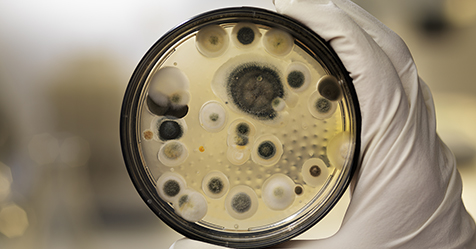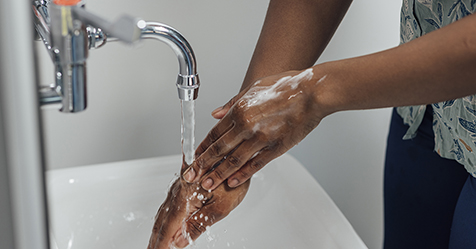The Reality of Mold Poisoning After a Hurricane
Deadly mold can be a very real consequence of hurricane flooding.
A year after the devastating downfall of Hurricane Ian, an article by National Public Radio station WUSF-FM highlights the need to stay vigilant regarding flooding and the deadly mold that it can produce.
The article tells the story of Christian Childers, Kendra Elliot, and their two children, whose home filled with ankle-deep water during the Category 4 storm. The flooding was just the beginning of their serious problems.
After two weeks without electricity and with no way to run the air conditioner, the resulting heat, humidity, and dampness created the perfect situation for mold growth in their home. According to the article, Childers, who suffered from asthma, fell ill after the appearance of the mold, and after several trips to the emergency room, died a week after suffering a cardiac arrest.
Dr. Iahn Gonsenhauser, chief medical officer at Lee Health in Southwest Florida, told WUSF that many patients after Hurricane Ian were helped at area hospitals and then discharged, only to be readmitted after returning to mold-infested homes.
“While it’s difficult for us to say specifically that these were mold-related issues, there was a correlation between individuals who were living in areas that were heavily mold affected and their need to access immediate care with our health system,” Gonsenhauser said.
According to the U.S. Centers for Control and Prevention, numerous species of mold can cause infection through respiratory exposure. At greatest risk are individuals who are immunosuppressed. Prolonged exposure to high levels of mold can also produce an immune-mediated disease known as hypersensitivity pneumonitis.
Many molds can potentially produce toxins given the right conditions. In recent years, increased concern has arisen regarding exposure to specific molds that produce substances called mycotoxins. Some molds that produce mycotoxins are commonly found in moisture-damaged buildings. The CDC reports that research related to mycotoxins is ongoing, and it’s still to be determined if any special measures related to mycotoxins are necessary.
The CDC recommends taking the following specific steps when returning to a building after a flood:
- Clean up and dry out the building quickly. Open doors and windows and use fans or dehumidifiers to dry out the building.
- Remove all porous items that have been wet for greater than 48 hours and that cannot be thoroughly cleaned and dried. These items can remain a source of mold growth and should be removed from the building. Porous, noncleanable items include carpeting and carpet padding, upholstery, wallpaper, drywall, ceiling tiles, insulation material, some clothing, leather, paper, some wood and wood products, and food. Removal and cleaning are important because even dead mold can cause allergic reactions.
- Clean wet items and surfaces with detergent and water to prevent mold growth.
- Temporarily store damaged or discarded items outside the home or building until insurance claims can be processed.
According to the CDC, appropriate personal protective equipment (PPE)—such as a tight-fitting NIOSH-approved N-95 respirator, gloves that limit contact of mold and cleaning solutions with skin, and goggles—should be used when performing clean-up or other activities in mold-contaminated homes or buildings after a flood. Persons with respiratory conditions, allergies, asthma, or weakened immune systems should avoid mold cleanup if possible or seek the advice of their doctor and determine what specific type of PPE is appropriate for them.
Check out Is Your Facility Prepared for Hurricane Season? for more information on how your facility can be better prepared for the real dangers of these storms.


